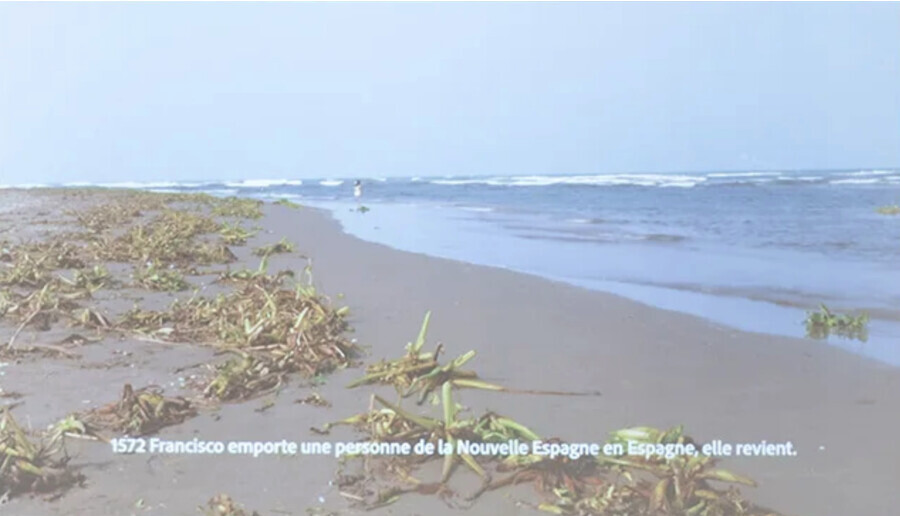
Still from Gramática de las ausencias, 2018.
Trade winds were the currents of air that brought Columbus to the Americas in 1492—an event that led to the establishment of trade routes across the Atlantic in the fifteenth and sixteenth centuries. Western history has canonized this era as one of “exploration and discovery,” marked by economic, technological, and cultural “progress.” This narrative, however, neglects the realities of mass displacement, enslavement, and extraction that enabled this time of imperial prosperity.
Trade Windings: De-Lineating the American Tropics interrogates the history and legacy of trade routes by mapping them in relation to the economic and migratory realities of today. Working across media and with an expansive range of materials, including colonial products such as coffee, tea, gunpowder, and cotton, the artists in this exhibition expose the structural and material dimensions of coloniality while highlighting the ways it continues to haunt the world today.
Drawn primarily from the MCA Collection, Trade Windings features artworks by Tania Bruguera, Rafael Ferrer, Ana Mendieta, Emilio Rojas, Juana Valdés, and Carrie Mae Weems, among others, who incorporate or reference maps and colonial products, such as coffee, gunpowder, and cotton, in their works. By outlining the historical entanglements of the American tropics, the exhibition exposes the ways in which the structural and material dimensions of coloniality permeate our daily lives.
In conjunction with the exhibition Trade Windings: De-Lineating the American Tropics, Mexico City–based artist Noé Martínez stages an evening performance at the MCA. Through his multi-faceted practice, Martínez uncovers the history of forced displacement and migration through research and personal narrative.
